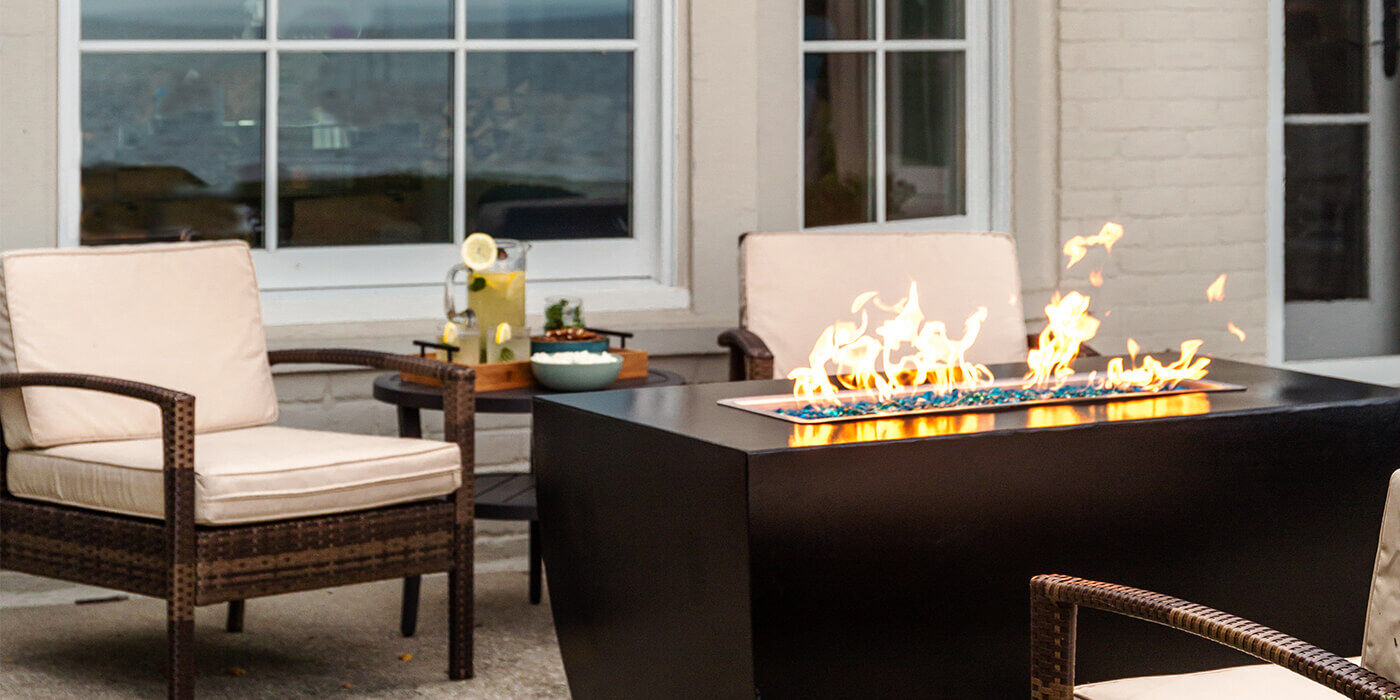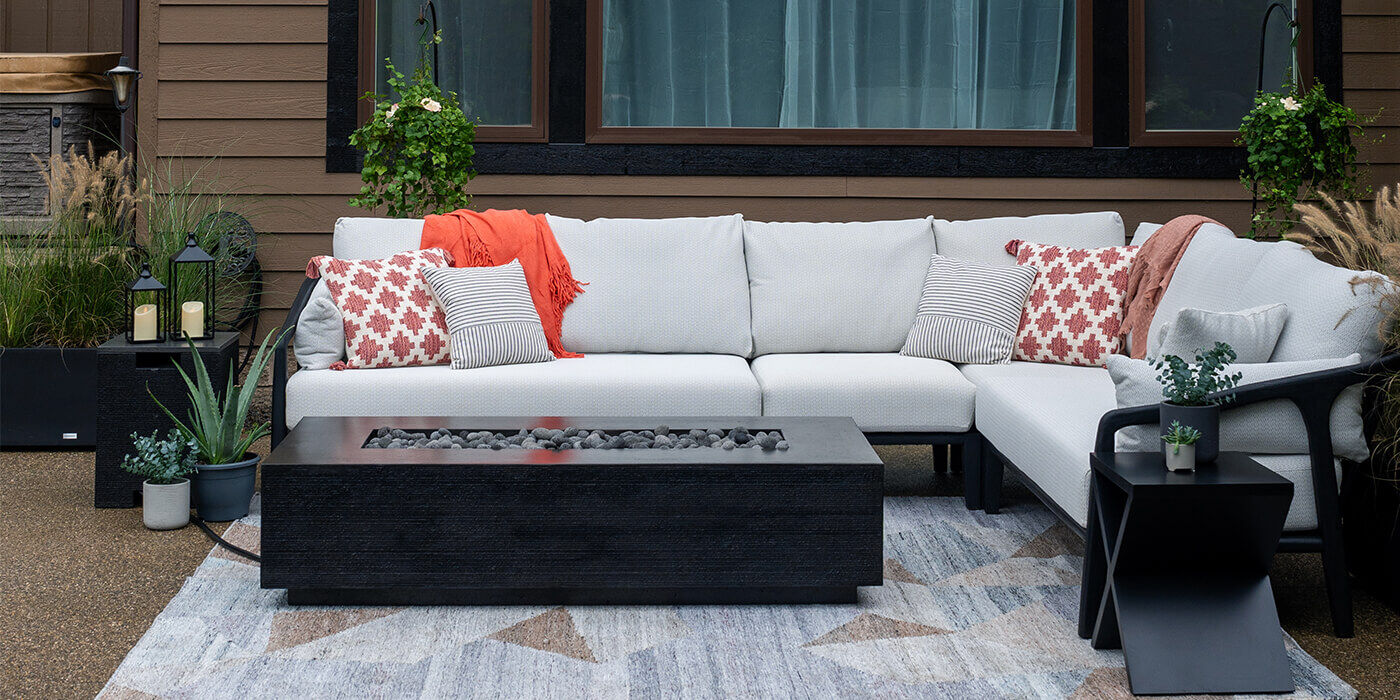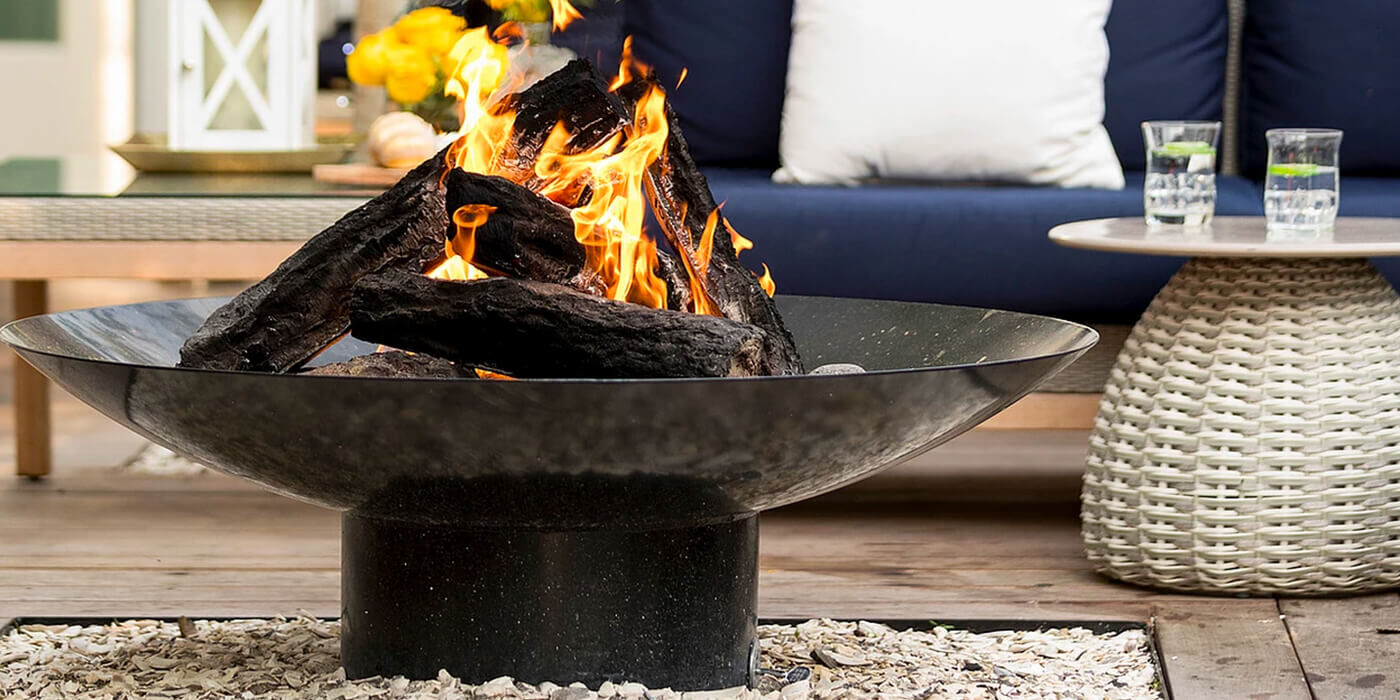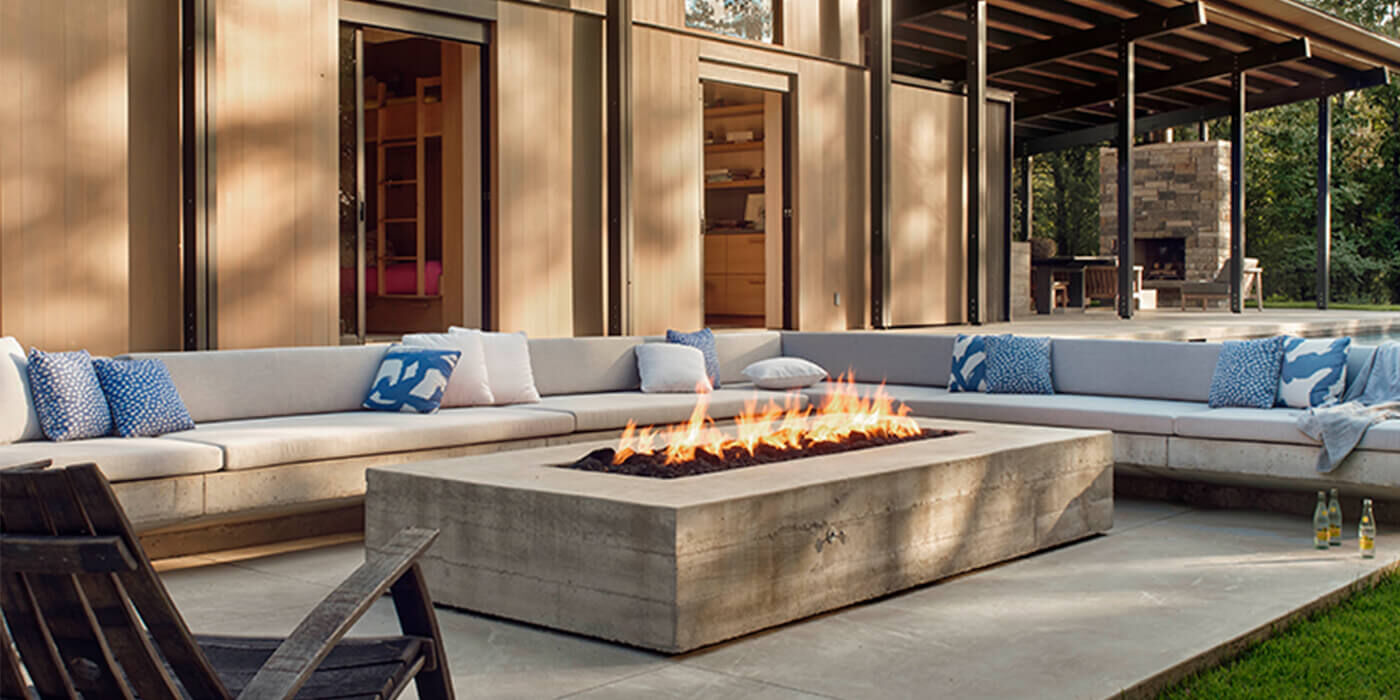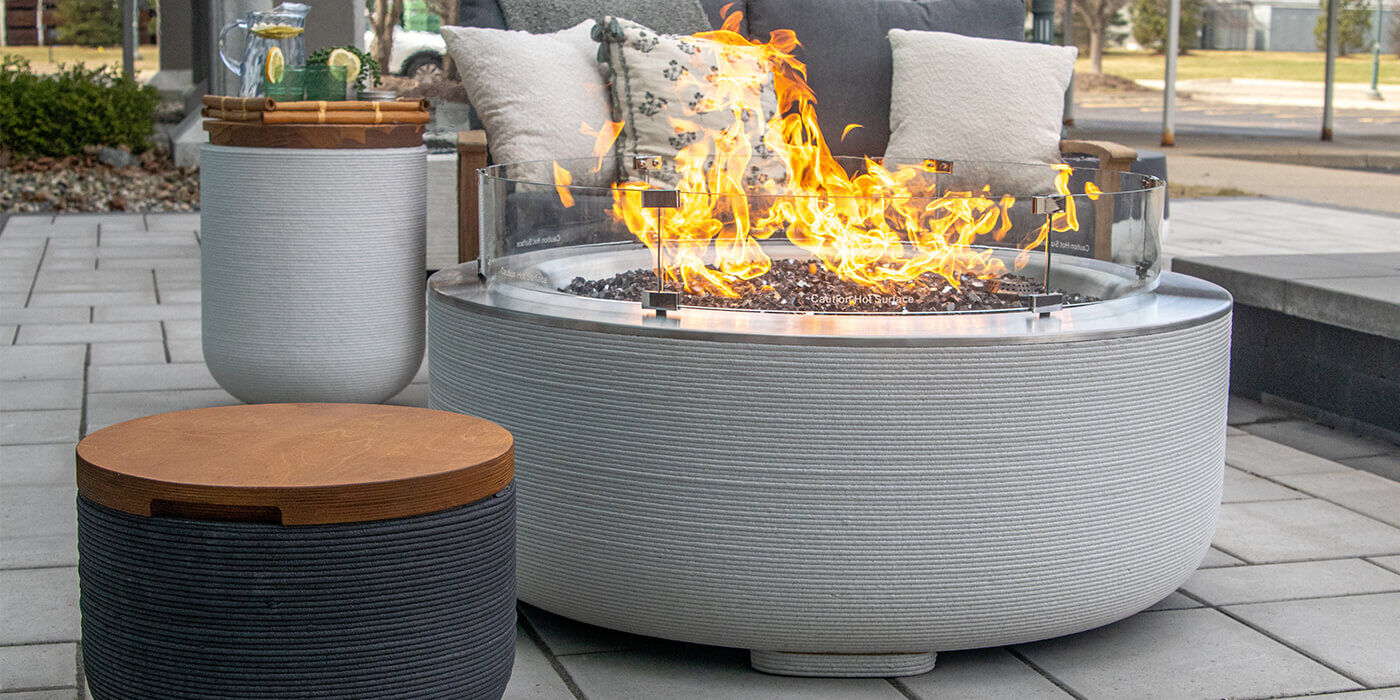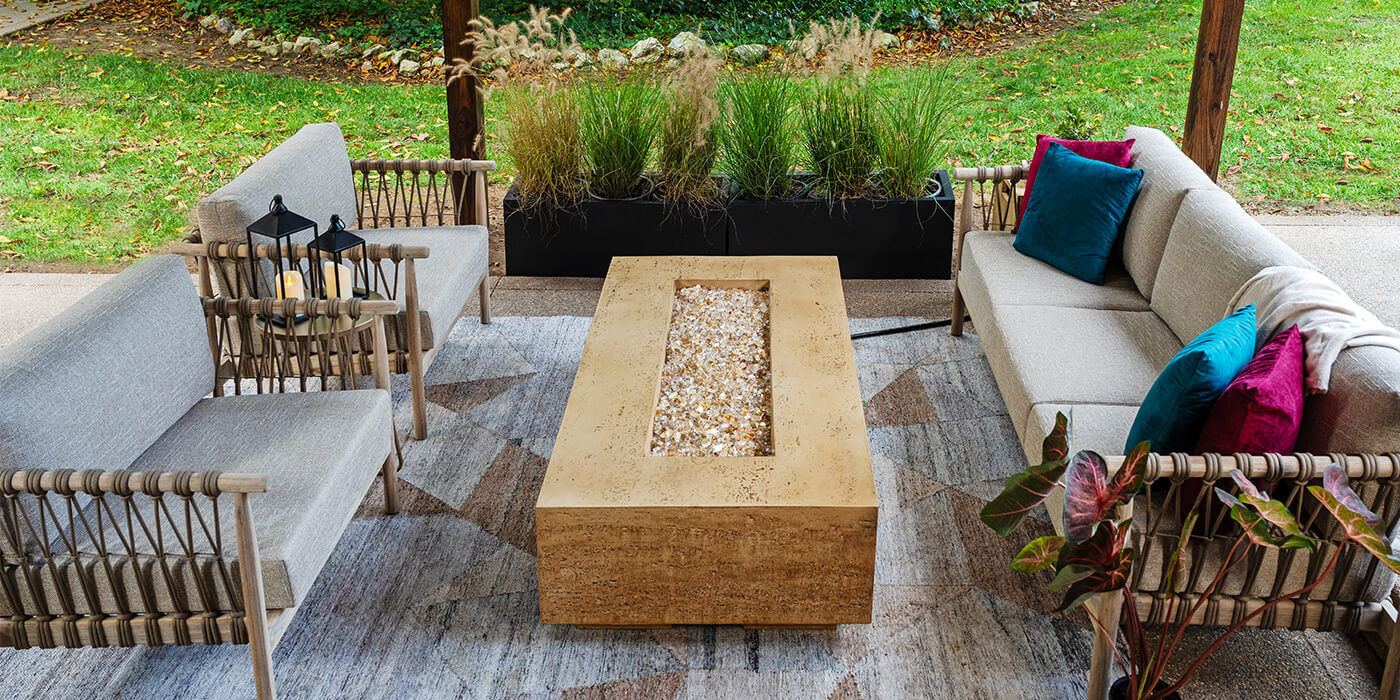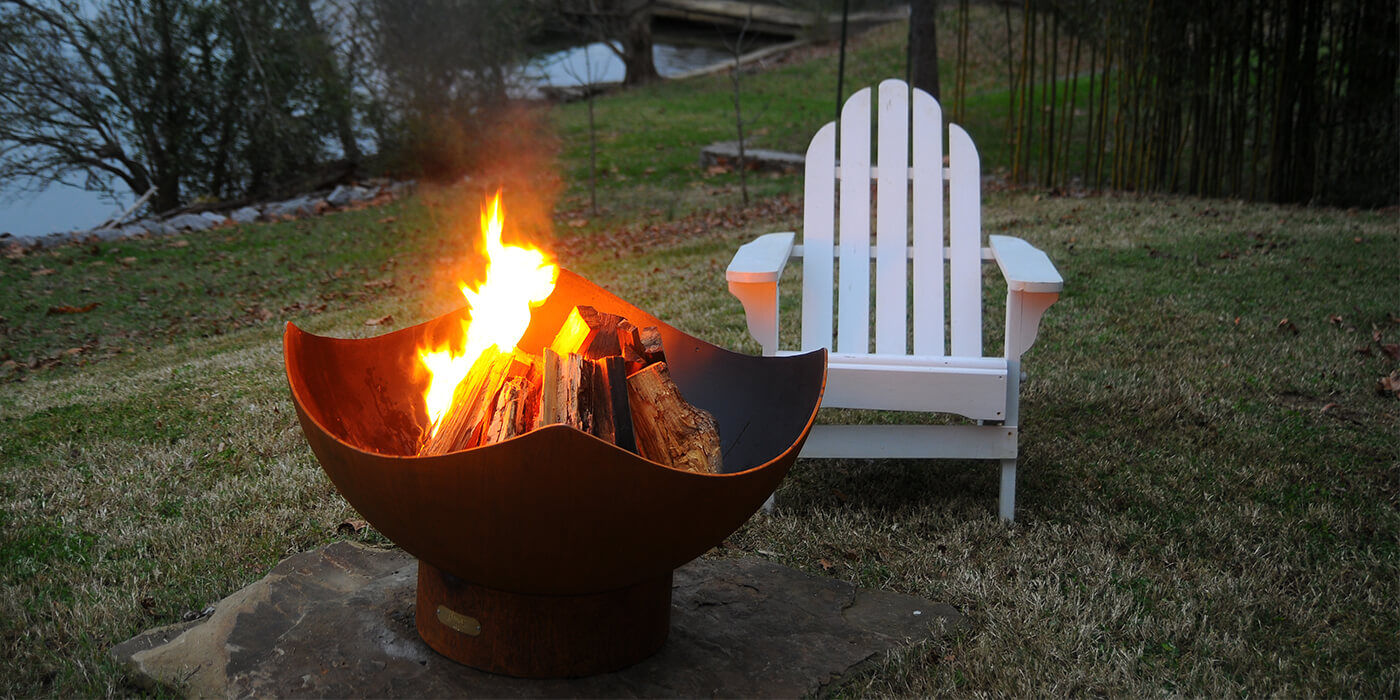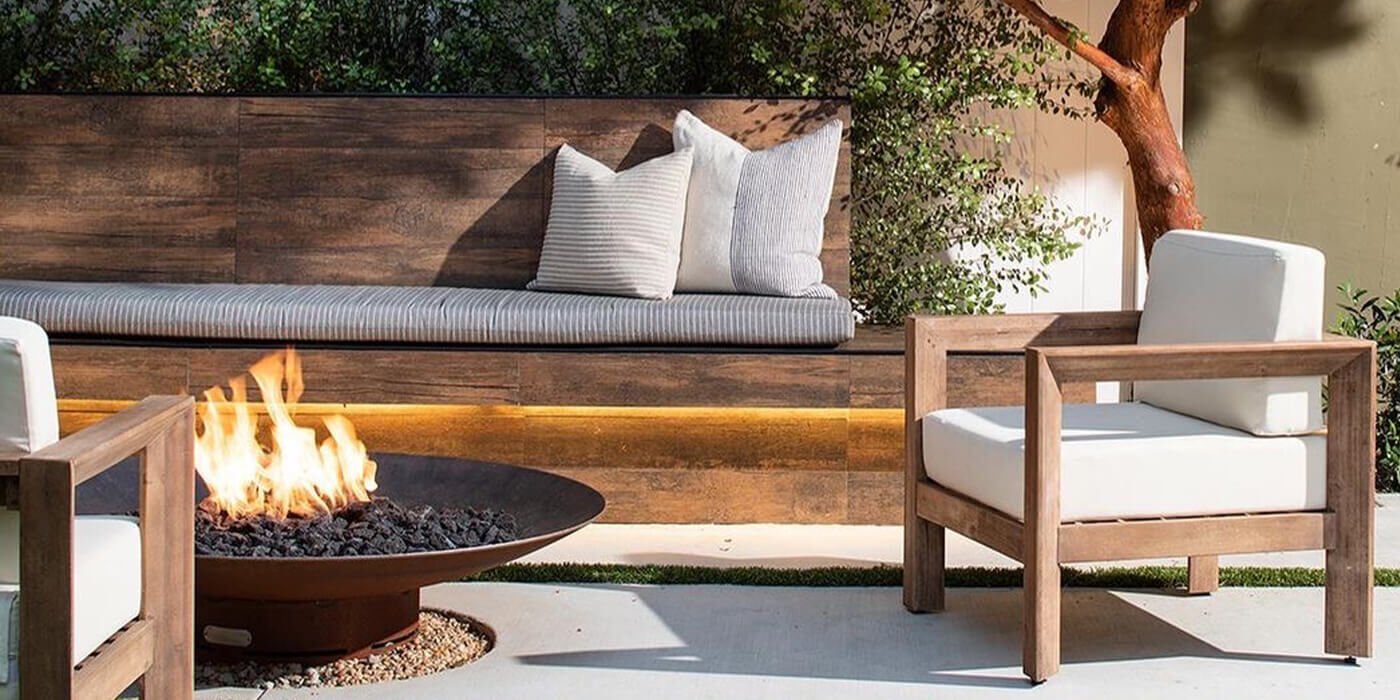By: Thomas Kearney, NFI Certified Master Hearth Professional
Last Updated: September 16, 2025
Nothing elevates an outdoor space like the ambiance of a fire pit. Once lit, your patio or backyard instantly transforms into a cozy retreat, complete with glowing flames, inviting warmth, and your guests gathering closer together to share stories and laughter.
Whether you’re picturing low-key evenings or lively get-togethers, the right fire pit becomes the centerpiece of your outdoor living space. With so many styles, fuel types, and features to choose from, finding your perfect match can feel like a challenge.
That’s where we come in. This in-depth outdoor fire pit buying guide breaks down every major type, along with their pros, cons, and ideal uses – so you can confidently choose a fire pit that fits your space, style, and the way you like to entertain.
Why Are Fire Pits So Popular?
Fire pits are one of the most sought-after outdoor design features for a few good reasons:
🔥Social Gathering Spot: A fire pit area draws people together. It’s a natural focal point for your outdoor conversations, parties, or family time.
🔥Extended Outdoor Living: Looking for a way to enjoy your outdoor space year-round? Fire pits keep your patio or backyard at a comfortable temperature, so you can stay outside in the colder fall and winter seasons.
🔥Ambiance & Aesthetics: The flicker of flames adds a relaxing, upscale feel to any outdoor space, making it look and feel more inviting.
🔥Versatility: Available in wood, natural gas, and propane options, fire pits fit different lifestyles, spaces, and budgets.
🔥Light Cooking Fun: If you have a wood fire pit, you can use it for light cooking, like roasting marshmallows or making s’mores.
🔥Property Appeal: Adding a stylish fire pit can increase the attractiveness of your outdoor area, boosting value and curb appeal.
Fire Pit Types
When choosing a fire pit, your first major decision is fuel type — wood burning, natural gas, or propane. Each open offers a distinct experience, so let’s break them down.
Wood Burning Fire Pits
Wood fire pits are a classic choice. They deliver unmatched rustic charm with the authentic crackle, smolder, scent, and warmth of a real wood fire. They’re also affordable, easy to set up, and produce intense heat.
While wood burning pits require more effort to monitor and maintain than gas fire pits, the nostalgic, comforting atmosphere they create is well worth it.
Pros:
✅ Authentic campfire feel with crackling logs and natural smoke.
✅ No gas lines or fuel tanks needed.
✅ Often more affordable upfront.
✅ Can double as a cooking space with grill grates or skewers.
Cons:
⚠️ Requires a steady supply of firewood.
⚠️ Produces smoke and ash, which some people find messy or irritating.
⚠️ Can be subject to local burn bans or restrictions.
⚠️ More time and effort to light, maintain, and clean up.
Best Uses:
Wood burning fire pits are ideal for homeowners who love a traditional experience and don’t mind tending a fire. They’re best for larger yards where smoke won’t bother neighbors and for those who enjoy cooking over open flames.
Natural Gas Fire Pits
If you’re looking for a smokeless fire pit, gas is the way to go. Natural gas fire pits offer a more permanent solution. They’re usually installed with a direct gas line from your home, meaning you never have to worry about running out of fuel.
Gas fire pits are easy to use and inexpensive to operate. They create clean-burning fires without smoke, fumes, or harmful byproducts.
Depending on the burner system your gas fire pit comes with, you can also turn the fire on and off with a remote control or wall switch.
Even with DIY experience, working with gas is dangerous. If you don’t already have a gas line, you’ll need to hire a licensed gas professional to install one and hook up your fire pit.
A seasoned pro can also tell you what permits you might need before installation, so you comply with your local regulations.
Pros:
✅ Instant ignition—just turn a knob or push a button.
✅ Consistent flame and heat.
✅ No smoke, ash, or sparks.
✅ Lower fuel cost over time compared to propane.
Cons:
⚠️ Higher upfront cost for installation.
⚠️ Requires professional connection to a gas line.
⚠️ Cannot be moved once installed.
Best Uses:
Natural gas fire pits work well for homeowners who want a clean, low-maintenance fire feature as a permanent part of their outdoor space. They’re excellent for frequent entertainers who value convenience and consistency.
Pro Tip:
Keep in mind, connecting your fire pit to a gas line can limit its placement. Installing a gas line out into your yard may also require specific permits.
Propane Fire Pits
Propane fire pits offer many of the same benefits as natural gas but in a more flexible form. They run off standard propane tanks, like a gas grill, and can be moved around if needed.
Like natural gas models, propane fire pits are clean-burning and don’t produce smoke, fumes, or byproducts.
Many models also feature “hidden tank” designs, providing a stylish way to hide your fuel source. You can stash a propane tank in the base of your fire pit and open a designated door to swap it out when it’s empty.
Some propane fire pits also offer matching enclosure to conceal your tank and double as outdoor side tables.
Pros:
✅ Quick, easy ignition with adjustable flames.
✅ No smoke, ash, or wood to store.
✅ Able to be moved around.
✅ Variety of designs, from table-style to bowl-style.
Cons:
⚠️ Propane refills can be more expensive than natural gas.
⚠️ You’ll need to monitor tank levels to avoid running out mid-gathering.
⚠️ Flame size may be slightly smaller than wood or natural gas.
Best Uses:
Propane fire pits are great for renters, smaller outdoor spaces, or anyone who wants flexibility. They’re also perfect for patios where a permanent, natural gas installation isn’t possible.
Fire Pit Styles and Materials
Once you’ve decided on a fuel type, it’s time to think about fire pit designs and materials.
Consider where you live – certain fire pit materials may be better suited for the weather conditions in your region.
Common fire pit styles are:
- Fire bowls: Classic and versatile; work with wood, natural gas, and propane.
- Fire pit tables: Designed with a wide ledge to double as a coffee or dining table.
- Fire columns: Ideal for small patios and outdoor walkways; used mainly for ambiance and lighting.
- Built-in fire pits: Custom masonry installations for a high-end, permanent feature.
- Propane fire pits: Designs that can be moved or stored.
Popular fire pit materials include:
- Steel: Durable and affordable; may develop a rustic, rust-toned patina over time.
- Stainless Steel: More resistant to rust and corrosion compared to standard steel fire pits; with proper maintenance it lasts longer outdoors, even in corrosive elements.
- Concrete & GFRC: Modern look and excellent durability; GRFC is lighter and more weather-resistant than standard concrete.
- Stone or Brick: Timeless, permanent installations with natural appeal.
- Copper: Elegant and eye-catching, though pricier; develops a blue/green patina over time.
Your choice of style and material should reflect your outdoor décor, how much space you have, and whether you prefer a permanent or flexible setup.
Fire Pit Safety Tips
Safety is key when choosing a fire pit. Here are some tips to ensure your fire feature remains a source of enjoyment — not accidents:
📌 Place your fire pit on a stable, nonflammable surface away from overhanging structures.
📌 Keep a fire extinguisher, sand, or water nearby (for wood fire pits).
📌 Follow local codes and restrictions regarding open flames or fuel use.
📌 Use a spark screen or wind guard if necessary.
📌 Never leave a lit fire pit unattended.
Check out more fire pit safety and maintenance tips from the experts!
Sizing and Placement
Think about how you’ll use your fire pit and how many people you typically host.
A small bowl fire pit may suit a couple with a small deck, while a large built-in gas fire pit can anchor a spacious patio.
As for placement, there are a few factors to consider:
- Wind direction (for wood fire pits)
- Seating arrangements
- Clearances
Your fire pit needs to be a safe distance away from patio furniture, outdoor decor, plants, trees, or any other flammable materials.
The exact clearance requirements to follow are in your fire pit owner’s manual. Be sure to read through it carefully before choosing a final location.
Extra Features to Look For
Many modern fire pits come with extras that enhance the experience:
- Adjustable Flame Controls: For natural gas or propane models.
- Cooking Grates: Turn your wood fire pit into a grill.
- Glass Wind Guards: Help protect the flame and keep heat steady.
- Hidden Fuel Storage: Keeps propane tanks out of sight.
- Fire Pit Media: Decorative elements for gas fire pits that also help with heat distribution. Design your burning display with our fire pit media buying guide!
Budgeting for Your Fire Pit
Prices vary widely. Portable wood burning fire pits may cost under $200, while custom natural gas fire pits can run into the thousands.
The overall cost depends on the fire pit’s size, the material, the features it comes with, what kind of fuel it uses, and any labor you might need for installation.
Spending a little more upfront for quality and convenience will pay off in the long run.
Final Tips for Choosing the Perfect Fire Pit
When it comes to choosing a fire pit, there’s no one-size-fits-all answer.
Think about:
💡 Your preferred fuel type (authentic wood vs. natural gas or propane).
💡 How much space you have.
💡 Whether you want a permanent or portable solution.
💡 Your budget for purchase, installation, and ongoing fuel.
💡 The level of maintenance you’re willing to do.
By weighing these factors, you can narrow down the options and confidently select the best fire pit for your outdoor setup.
FAQs
Some gas fire pits can be converted from propane to natural gas, but you’ll need to consult the manufacturer's guidelines and hire a licensed gas professional to ensure safety and compliance with local codes.
You only need fire pit media for gas fire pits. Media helps your gas fire pit create a more natural flame appearance. Without it, the flames will concentrate in certain areas.
There’s a variety of fire pit media available, including colorful fire glass, traditional lava rocks, and rustic gas log sets.
The best option depends on what you want your fire pit to look like and whether it’s approved in your owner’s manual.
We highly recommend purchasing a cover for your fire pit. Covering it protects it from the elements and prolongs its life.
For gas fire pits, you can also purchase a weather-resistant cover for the burner area.
The amount and type of maintenance will depend on what kind of fire pit you have – wood or gas – and what it’s made of.
Be sure to consult your owner's manual for approved cleaning products and methods.
We’re Here to Help
Do you have more questions about fire pits? Reach out to our NFI Certified Experts today at 800.919.1904.
More Resources
Create a cozy seating area near your new fire pit with our patio furniture guide.
Should you go with wood or gas? Compare both fuel types to find your ideal fire pit.
Can you safely put a fire pit on your wood deck?
 |
Tom Kearney has been a Technical Sales Representative at Woodland Direct for over a decade, where he has honed his expertise in gas, wood, and pellet appliances as an NFI-Certified expert. Tom's dedication to customer satisfaction is exemplified by his work with high-profile clients, including assisting SpaceX President Gwynne Shotwell in sourcing five stunning fireplaces for her Texas home. When he's not helping clients find their perfect fireplace, Tom enjoys hitting the golf course, skiing down snowy slopes, and exploring new trails on his bike. Call him or one of our experts in fire at 800.919.1904. |
